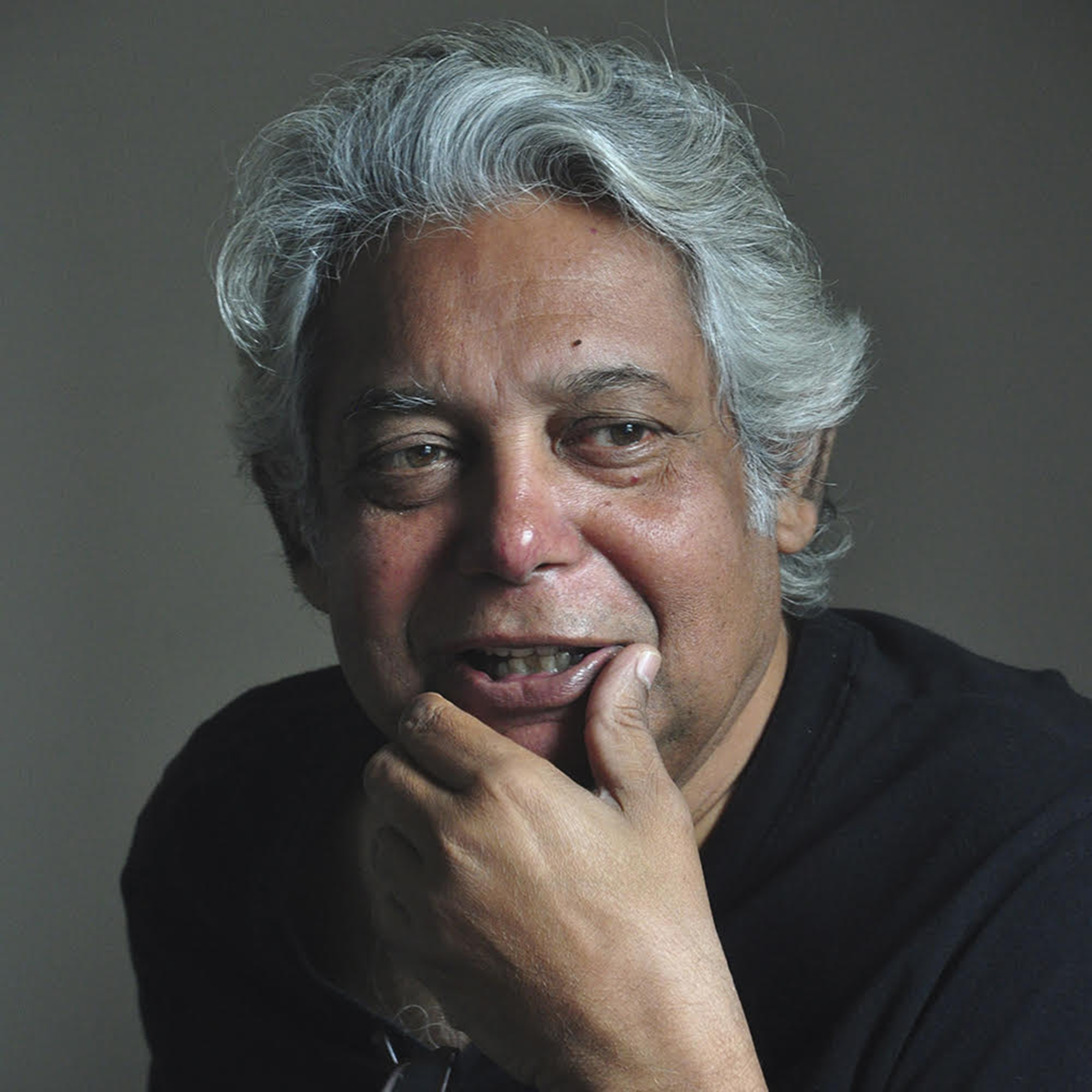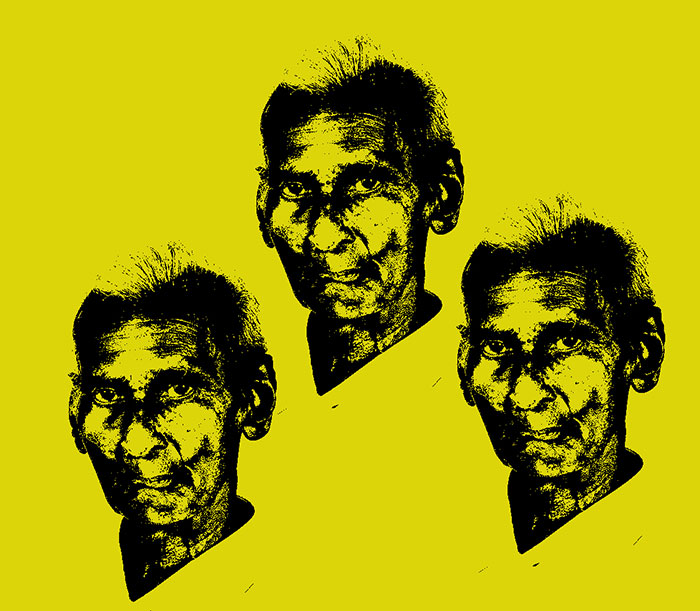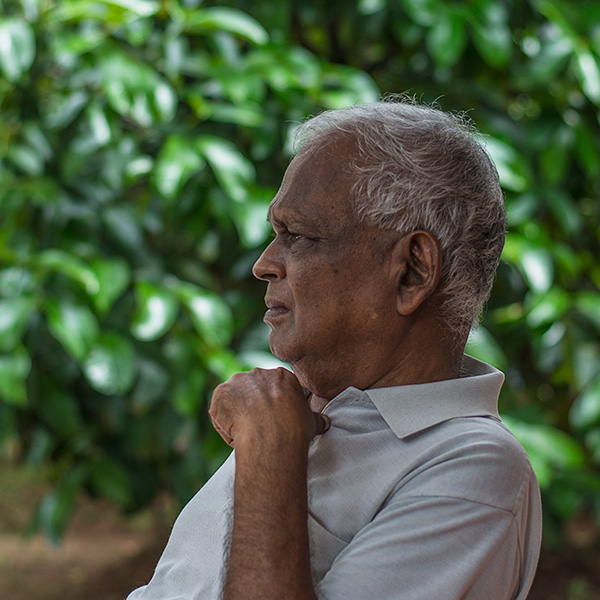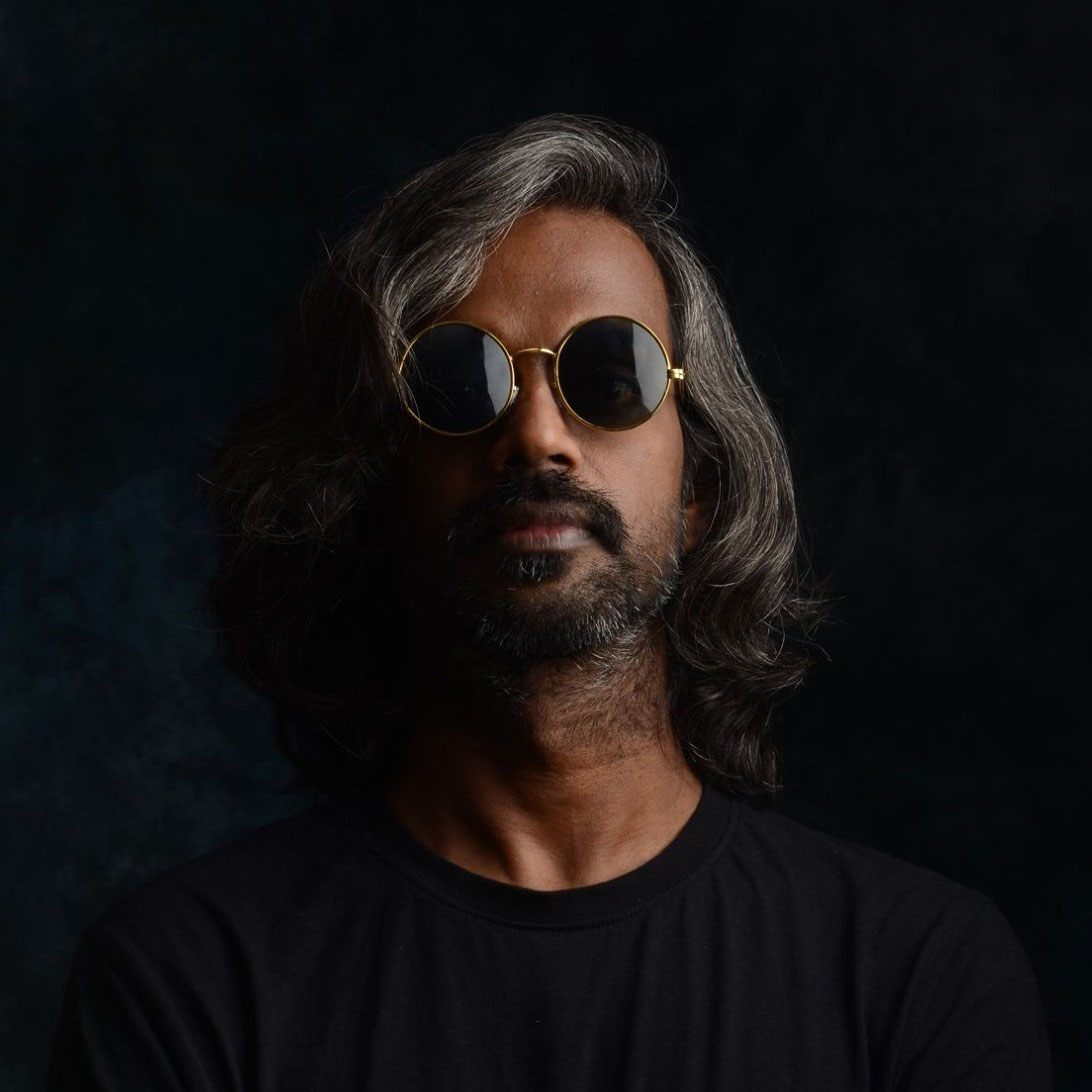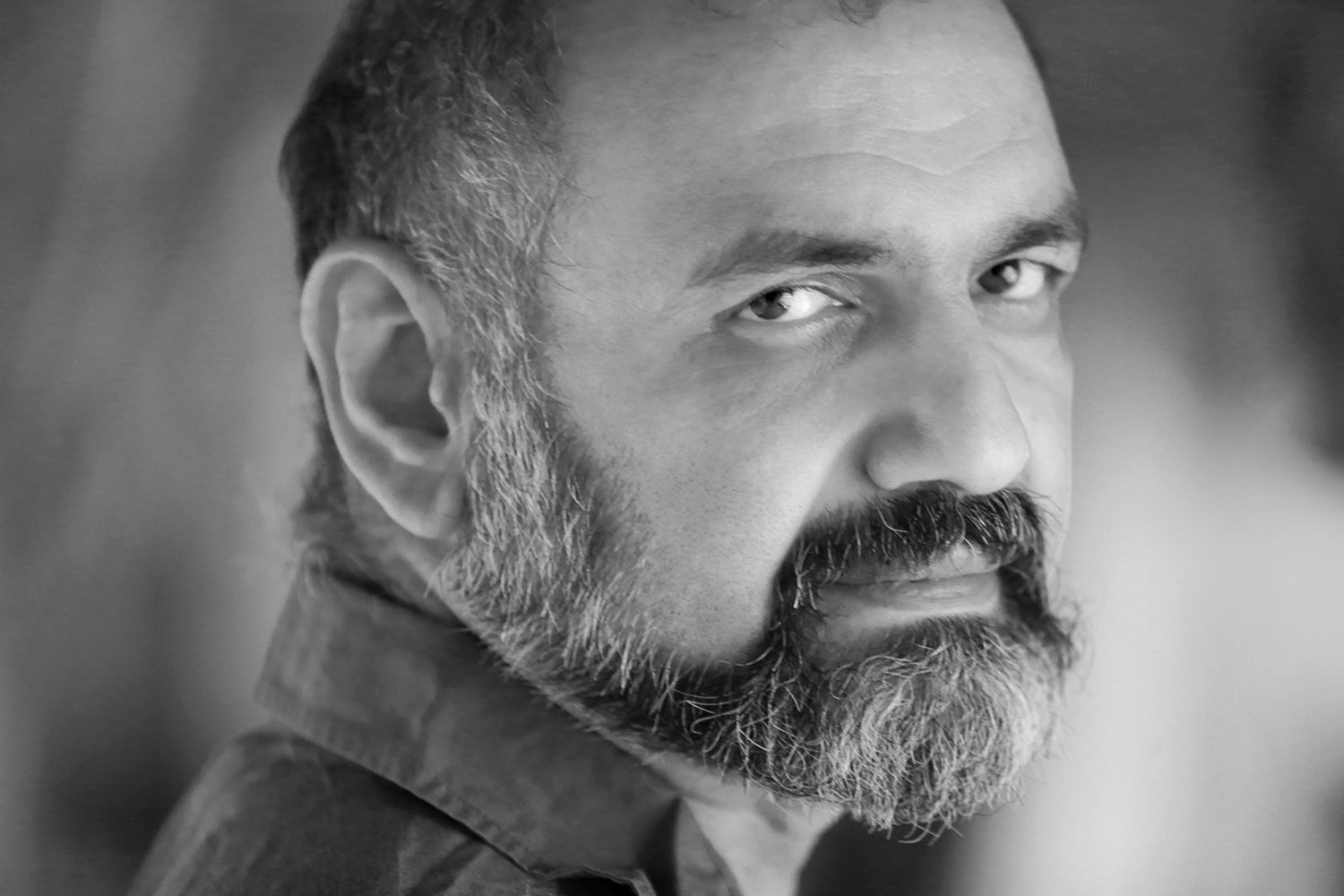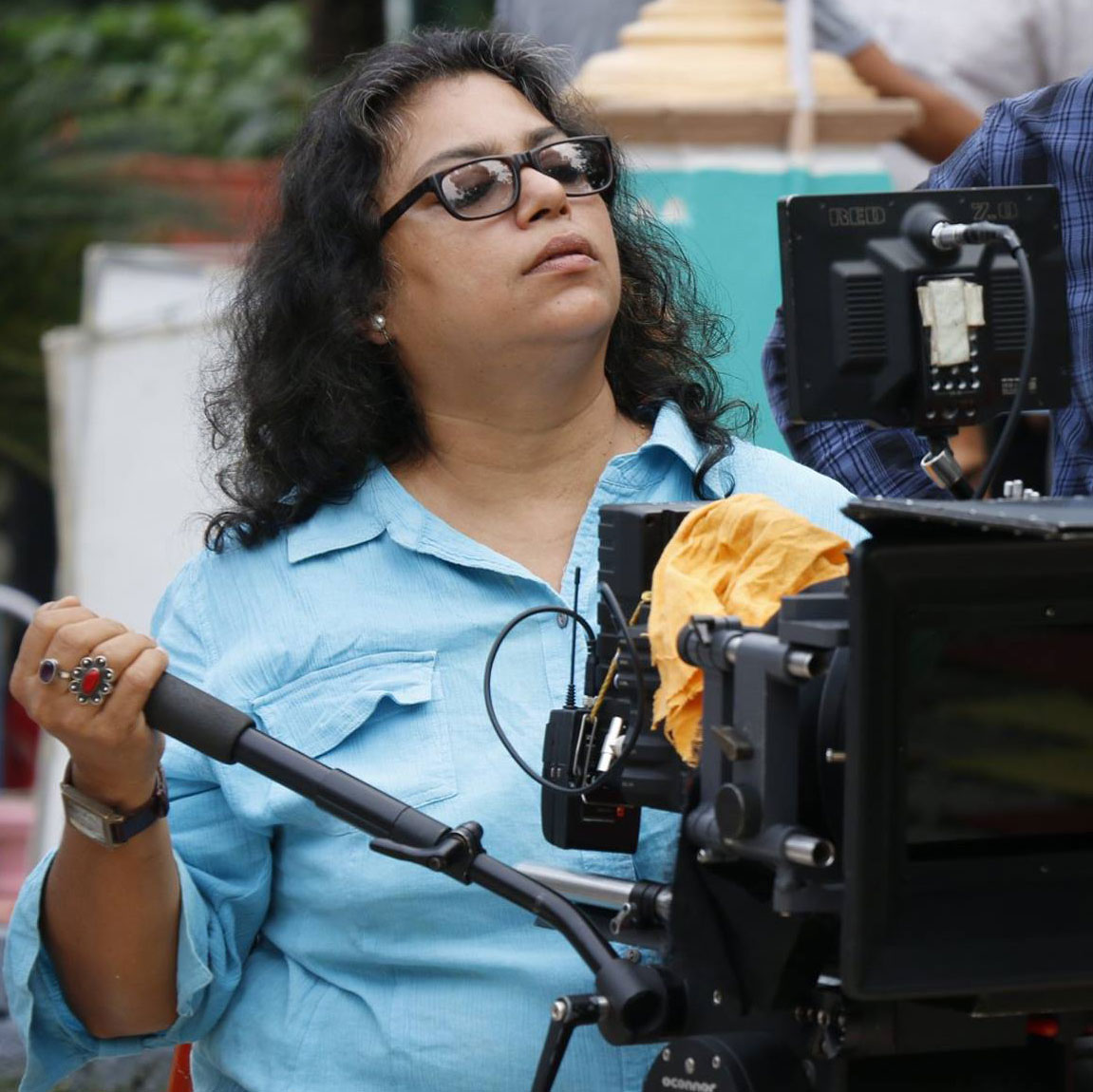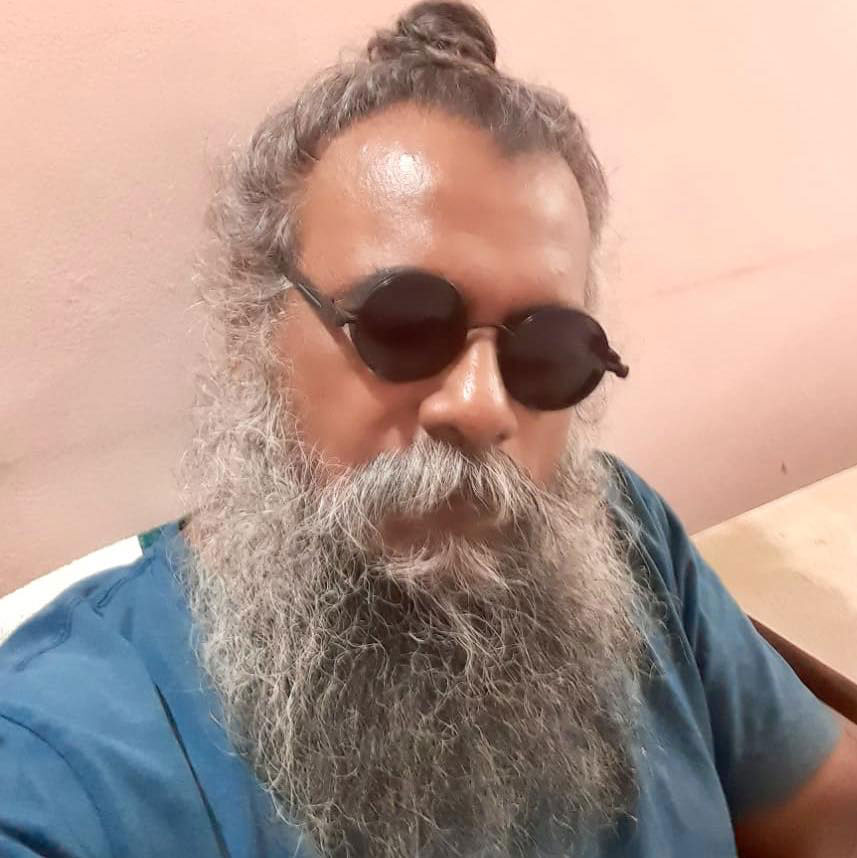Face to Face
Photo Mail publishes
Exclusive interviews
With photographers
Academicians and artists
From related visual
Arts practice
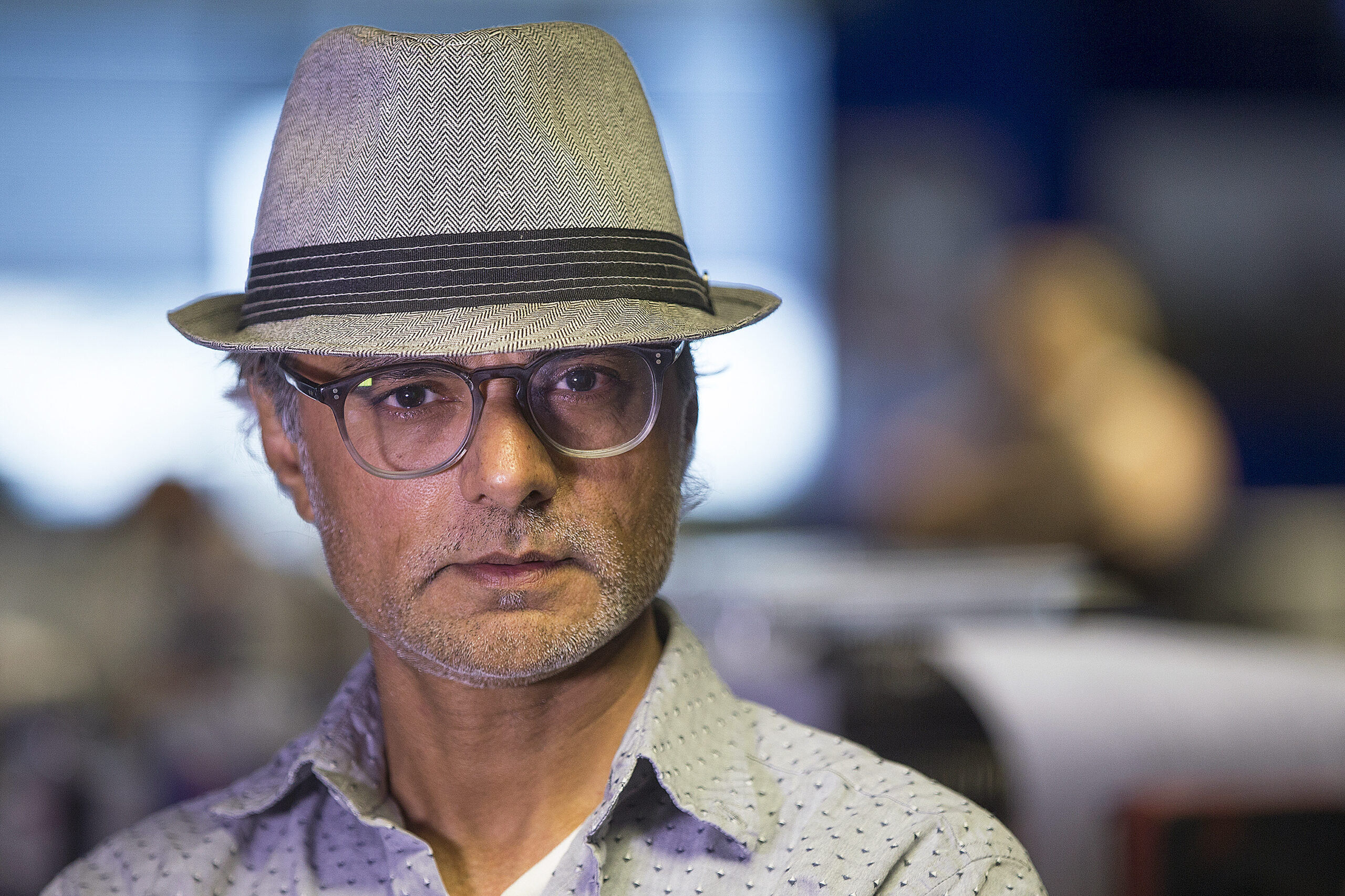
Photographer Nick Oza
Nick Oza is a staff photojournalist at the Arizona Republic where he covers community and national issues like immigration, gang violence, mental health, and refugees. His 20+ years of experience behind camera has taken him to places like Iraq, India, Benin, Mexico, Guatemala and all over North America. Recently he has been working on politics and immigration crisis. He is driven by curiosity, compassion and a deep desire to tell stories of people whom he documents. His multimedia work has been honored with an Emmy Award and his documentary photos have received honors from Pictures of the Year International and NPPA’s Best of Photojournalism. He was also awarded the Pulitzer Prize for Public Service as part of the Biloxi Sun Herald’s coverage of Hurricane Katrina.
This interview was held on June 6, 2021. Nick Oza met with a major car accident on September 3, 2021, and is seriously ill. There is a fund-raiser organized by Nick’s friends, please do support this fabulous artist and his family in this crucial time. Link to Go Fund Me | Here is a portal that sells some of his works, please do acquire now, the money will go to Nick and his family. See Nick Oza’s works titled Invisible Lines presented as part of Images of Encounter online exhibition.
– The Editor
How do you choose between monochrome and color for your photographs?
The choice of color and black and white is a conscious effort because of the technology. Sometimes, when I was shooting at night, it was so muddy or the color was bad and I had to go with black and white. Most of the time, I choose black and white because of the context and it creates another layer of visual element. Black and white is my personal choice. It gives more punch as an art form and from the context perspective too.
What are your thoughts on street photography?
Street photography is a two-way street. You are looking for those decisive moments. If you are a street photographer or a journalist, you have to be curious about people’s lives. You are trying to learn every day from others and there are gems out there to learn from. Do your homework and learn about the culture. But be like a child and understand your subject.
Are your stories more candid ones or staged?
With photography, most of the time you are a loner. You go to a lot of different places and you try to gain access to the subject. The camera becomes a tool and you become a storyteller when the subjects respect, understand, and open their hearts. One thing I learned the hard way: I was a photographer first and ambushed the way journalism drilled in. But people are more aware of photography and everyone is a photographer. So that layer is gone. You can work on a different level like listening to them. And you get more opportunities.
Photography will take up a different stage, as we are getting into a new genre—video storytelling. Good or bad, the video has taken another extension. Everybody thinks they need to do a documentary of reality. They are setting up pictures. They think the drama should tell. There is a place for fiction and there is a place for reality. A lot of documentaries are in an in-between place where you are sensationalising a reality. When the video shooting equipment comes in, the subject becomes aware. Then it becomes staged. I wanted to do a project on homeless people and my subject was a lady. Unfortunately, the organiser took her to do her nails and hair. It would have been good if I had captured her enjoyment at getting the opportunity to have her hair and nails done. But when she came out, she was looking like a fashion queen – that was definitely staged and the intimate candid opportunity was lost.
You have worked on very sensitive themes. How did you approach the subjects and how was your experience in working with them?
The first personality even as a journalist is being a human. We all have ethics and standards. You have to be human first and respect people first. Every photographer should learn that. The respect level is more important than any photographs or stories. If you respect people, the doors can be opened on different levels. I have been covering immigration for 10-11 years. Before people knew me, it was “No, you are walking into people’s atrocities”. The only way people let you in is because of the respect level and if they know your work. It was “no” initially but then eventually people would call me when their families were getting deported or incarcerated in jails. That was the best leverage I had – people started calling me.
The first hat you should wear is being a good human. The second is the journalist’s hat, where you are putting your ethics in command. Those are the things people should do and respect. You are working on so many sensitive issues. I work on women’s issues and mental health. Honestly, life is not fair. Not everyone has the privileges of time or money or going abroad. You just have to have a focal point and a good and positive attitude towards everything.
How did you manage to balance the job demands, the creativity, your emotions, and ethics when you had to work on some of these very sensitive themes?
You need to find a balance. When you are working on certain stories about mental health or children getting separated from their families, those are hard stories and it ingrains people’s misery in you because you are witnessing things. Sometimes I feel that I soak in a lot of their pain. Once you understand people, photography is secondary. Because you are speaking from heart to heart. There are moments – good moments, in-between moments – and once you capture that, magic happens in photography. You always wait for that magic to happen. Otherwise, we are just taking pictures. We are all taking pictures. But once in a while, you are in tune with the people. The only way you can be in tune with people is to be a genuine person, understand them genuinely and go from there. People have a very good instinct about others whether they are educated or not. I like to be like a child. When you think you know everything, you are failing. We are all learning from each other at one point or other.
I try to do research on places, people and cultures and have some respect for what not to do, and what I will have to be careful about. I try to listen to elders because they know more mannerisms which need to be avoided. When I go places, I am not taking pictures immediately. I keep my camera in front of me. People become curious and ask questions and I want them to ask questions. That’s the first level of communication when you can explain to them.
You have got two Pulitzer awards. What do photographers require to do to achieve that?
Out of 12 stories, I worked on 10. The time was limited, though we had the access and the resources. There was a lot of work and that was a team effort. You really need a big team to achieve something like that. It’s not a one-way street. You need a good foundation. There are so many projects I have done, where the path is strewn with obstacles. For example, most of the time I am generating my own story ideas at the newspaper because they trust me. But then there are other times you are chasing reaction stories. When you have good stories and good sources for those stories, don’t drop them.
Sometimes failure is more important than success. Success is based on failures. A lot of people won’t tell you because everyone wants to tell you their success stories. Now I have a platform with all this body of work. Once you have that, people never talk about their failures. If you are not failing, you are not pushing. Failure is very important. It’s part of life and the process of growing. The child gets up, tries to walk, he doesn’t know how to walk, he falls down, but he gets up. Also, get into a course or training in a university or an institution.
What was your toughest project to date?
So hard to say. I work on social issues. I worked on a transgender project 22 years ago and it was the toughest one as it was difficult to explain to society. Newspapers and institutions didn’t want to do this because they thought that they will antagonize the religious or the faith-based sectors. This exists but we are ignoring this topic. I was able to showcase that work in India. It became like an awareness piece and I was very proud of it. Sometimes the work you do doesn’t have a life now but it can have a life later. If the project has some kind of weight, like understanding humanity or environmental issues.
I worked on a DCS project for a year and a half. If the system thinks a child has been abused, he/she is taken away by the state. Most of these issues are related to substance abuse. I was trying to convince the parents when their children were taken away. I was getting into their lives. The answer was no. Another trauma I had was when a child died and it wasn’t the parents’ fault. But the system was gauging whether parents abused the kid and that’s how he died. The parents were the subject of suspicion. I won an Emmy on that, but the whole project drained my mind. We had a $300000 grant to extend the project and we created a dent in the society for good. You have to be lightning, not thunder. But sometimes you have to be like thunder to make the noise. You have to wait for lightning and photography is like some kind of lightning and that one moment can bring the light.
What are your other personal projects?
When I have four or five weeks of vacation, I would spend three weeks with my family, and then I will always explore creative projects. I photographed the natives or the Adivasis or tribal people in Maharashtra. It is so hard when you are going in and out but I would still like to do something on my own for a week.
Photojournalism versus photography as an art – Is there a thin line separating the two? How will you explain that?
Everybody is a photographer. Fine Art and photojournalism are merged. I am from an art background, but I became a commercial photographer. I pretty much learned from architecture. The first thing is access. If you understand photography or art, you create your own moments. My style and the art in my photojournalism haven’t changed over the last 15 years. We all have the same heart and blood, which is red. We have a very similar mind. That’s where we need to bring society together. Poverty is captured. But no one talks to the poor to see the beauty of their souls. You have to find your ways to do it.
People have the grasp of fine art and photojournalism merging together to put it on the wall. No one wants to put a sad picture on the table. Life is tough as is. Some people, though, would want to hang the misery on the wall, for creating awareness of what they believe in. There are people out there who are art for art’s sake, who have money, and if the artist is big and famous, they have the signed print. We need those people who can either appreciate art or who want to hang the precious frame of Salvador Dali.
How has journalism evolved over the years?
We as journalists never feared for our lives earlier. But now we do and there’s sensitivity around fake news. Journalism has a lot of issues because people are not making enough money to survive and everyone is expecting for free. Everybody thinks like everybody can do whatever they can and do whatever everybody else is doing. There are a lot of copycats. The ego is big. Ego is necessary if you can keep it in check. If you don’t, either you will be in a Lala Land or you will become narcissistic, it will show in your work, consciously or unconsciously.
What are your thoughts on photography and ethics?
I met many Indian photographers during the Kumbh Mela in India. I understood how journalism works there and from my perspective, I felt they are more dedicated than I. There’s not much money or equipment. But my biggest fear was about their ethical standards. Indian photographers are doing phenomenal work and they are understanding ethical values in journalism much more than before because there is a conversation now. People are doing much more work in ethics in journalism and they are doing fantastic work. Some of them don’t have the privilege of good cameras but they are putting their mind and thoughts into their body of work and it’s just phenomenal.
What are your tips to progress from a very ordinary phase in life to where you have achieved it all?
It’s pure dedication. I have about 135 awards. They all are just sitting there. I have missed a great time of my child’s life, my wife, spending time with them. For example, be it Christmas or Thanksgiving, I am photographing someone else’s family rejoicing. While I am photographing it, I am missing my family. Those are the sacrifices. Either you do it or not. I have some regrets, but I cannot go back. You have to be fine with it.
For young photographers, society measures through awards. I was a big part of it when I was young. But in the last 4-5 years, I started entering the woods because either I am judging the context and I don’t want to get involved in it or speaking at a mentorship program. I was covering the migrant caravan for a month and I heard so many stories of women and children going through unimaginable atrocities. They were living in a very dire situation. Like in India, people were living in the streets and I was staying in the streets photographing them. I got sick and I had time to rethink the atrocities. I was getting these awards for people’s atrocities. I saw so many journalists who spent a lot of time showing such atrocities to win an award. Awards are good or necessary. But after we are mature enough, you want to do quality work, not wait for context but more story opportunities, because you are running out of your time. In your late forties or early fifties, you have to figure out what you want to do.
I want to tell young photographers; their biggest exposure is social media. Earlier, senior photographers were assigned to cover photographers. But others were assigned to photograph the janta. Either you were in the right spot or your editor put you in the right spot. Now the dynamics have changed. You can make pics anywhere you want. You are better off having your own personal vision than ever. Regarding fame or name, everything is dedication. There is no in-between. A few have privileges, more connected as in nepotism. If you want to enter a contest and make a name, the biggest thing is being out there and not being afraid to fail. Your success will be based on failures. If you are not afraid to fail, the winning is always there. If you are dedicated to craft and trying to be a good human first, everything will work out, maybe not the way you want it to be(chuckles). Have an open mind. You need to develop those connections so that people reach out to you even after 20-25 years. How the photographing experience changes our lives and we change too!!
Published on September 15, 2021
Share
Related Articles
Interview with Prashant Panjiar
Prashant Panjiar's latest photobook 'That Which Is Unseen' was launched on September 18. Published by Ahmedabad-based Navajivan Trust, this book is a collection of photographs and backstories from Panjiar's almost four decades of photography career. Here is an exclusive interview.
Interview with Nick Oza
Nick Oza is a staff photojournalist at the Arizona Republic where he covers community and national issues like immigration, gang violence, mental health, and refugees. His 20+ years of experience behind the camera have taken him to places like Iraq, India, Benin, Mexico, Guatemala and all over North America. Recently he is working on Politics and Immigration crisis. He is driven by curiosity, compassion and a deep desire to tell the stories of the people he documents. His multimedia work has been honored with an Emmy Award and his documentary photos have received honors from Pictures of the Year International and NPPA's Best of Photojournalism. He was also awarded the Pulitzer Prize for Public Service as part of the Biloxi Sun Herald's coverage of Hurricane Katrina.
Interview With Pulavar N. Thyagarajan
Pulavar N Thiagarajan is a poet, writer, political activist and amateur photographer. Thiagarajan was brought up in Poompukar, and has completed his matriculation in Poompukar, and further pursued a course under Madras University. Thiagarajan learnt English and Tamil from school, and developed each through personal reading and study. He soon joined the Tamil Manila Congress (TMC), and fondly remembers meeting Gandhi at Mayavaram (presently Mayiladuthurai). He was active in the freedom struggle and continued to work with the Congress after Independence. A noted poet and writer, the most significant book that he has published is Poompukar Varalatru Yechangal, which is an academic book on the history of Poompukar. His journey in photography began in the 1940s and he has photographed the town and nearby areas, focussing on the temples, temple art, gatherings and landscapes. Ekalokam Trust for Photography, a non-profit organisation dedicated to protecting and promoting contemporary photography, is presently archiving the analogue photographs made by N Thiagarajan.
Interview with Punalur Rajan
Punalur Rajan is a now-retired photographer who was one of the first photographers in Kerala who popularized the social documentary genre. Rajan is most recognized for his portraits of litterateurs, politicians and cine-personalities. Rajan’s photography can be described as being an offshoot of the same thought that produced Sunil Janah. The Communist Party was an integral driving force in both of their careers and in their photographic practice. A reflection of Sunil Janah’s impact in the national level can be seen in the influence of Rajan in a regional level. Photographing notable personalities, especially literary icons, was a trend that was and continues to be widespread in Kerala, supported by the many weekly and daily publications that wanted these photographs. Such images were largely attempted by journalistic photographers, rather than studio photographers, despite portraiture not being an area of specialization for most of them. Rajan’s skill in portraiture is what set him apart from the other photographers who have indulged in this genre over the years.
Interview with Selvaprakash Lakshmanan
Selvaprakash Lakshmanan is an independent photographer based in Bangalore. He earned his Masters in Communication from Manonmaniam Sundaranar University, Tirunelveli (2000 - 2002). In the year 2002, he started his career in photography as a staff photographer for Dinamalar, a leading Tamil newspaper and has later worked with Dinakaran, DNA and Time Out Magazine. His photographs have been published in leading National and International newspapers and magazines and exhibited in photo festivals. In this exclusive interview, he is sharing his work life and thoughts on photography.
Interview with Ramesh Varma
Ramesh Varma is a noted stage actor and director. He is also a Kathakali performer and has acted in lead roles in few Malayalam cinemas. An alumnus of Maharaja’s College, Ernakulam, and School of Drama, Thrissur, he is currently a lecturer in the theatre department in Sree Sankaracharya University, Kalady. His theatre works are notable for their focus on regional aesthetics and forms, with due importance being given to innovation and contemporary thought. He takes keen interest in photography, and has been practicing it diligently for the past six years. The numerous and varied photographs taken during his ‘Morning Walk’, a series of black and white images, are indeed theatrical, in the truest sense. Ramesh Varma has worked as a curator in ITFoK. In this exclusive interview by Arjun Ramachandran / Photo Mail, Ramesh Varma talks about aesthetics, the direction, and the future of theatre, while touching on the personal and the political facets of expression in different media.
Interview with Fowzia Fathima
Fowzia Fathima is a cinematographer, who graduated from the Film and Television Institute of India, Pune. She is well-regarded as a teacher, having taught in various institutes including the Satyajit Ray Film and Television Institute. She has recently come into further prominence for pioneering the Indian Women Cinematographers’ Collective – a first of its kind effort in uniting women cinematographers across the Indian film industry.
Interview with Johny ML
Born to Lt. Vakkom K.Lakshmanan and K.Krishnamma in Vakkom in 1969, Johny ML started writing poetry at an early age and got his first poem published when he was thirteen. His father being one of the founder members of the Revolutionary Socialist Party (RSP) in Kerala, Johny developed an interest in politics and started following his father’s footsteps in village reformation. Reading collected writings by Karl Marx and Frederick Engels in his teens left a deep impression in him and guided by his mother he started reading poetry and literature avidly. Johny finished his school education in Government High School, Vakkom. He took science stream for his Pre-Degree and spent two years in the Sree Narayana College, Sivagiri, Varkala. In 1987, he joined the University College, Thiruvananthapuram and completed his BA and MA in English Language and Literature in 1992.


